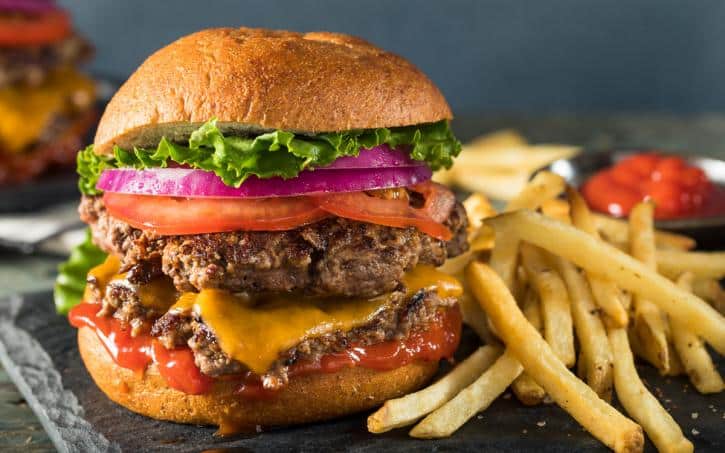










Growth Ready QSR’s annual Growth 40 takes a look at the best large, medium, and small markets to open a restaurant in. Whether this is your brand’s first or 1,000th location, real estate, demographics, traffic, density, and other factors remain critical touch points in the high-stakes conversation that often splits success from failure in this business. For this breakdown, we’re sticking to the large markets from this past year’s report (https://www.qsrmagazine.com/growth/2017-growth-40). Here are the top 10 cities in the U.S. to expand or start your quick-service restaurant company, with some input from leading operators at growth-ready concepts. Methodology: Market size is based on population, wherein each size designation makes up roughly a third of the total U.S. population. The Score is a proprietary metric from The NPD Group that is the measure of market opportunity. It takes into account the quick-service restaurant density in a market, as well as the difference between traffic and population growth. A high score could be driven by a large difference between population and traffic growth and/or a low quick-service restaurant density.
1. Phoenix Score: 9 2016 Population: 5,315,650 2021: Population Projected: 5,657,874 Projected Population Percent Change: 6.4 percent Total Restaurants Open: 9,140 Quick-Serves Open: 5,302 Total Restaurants Per 100,00 Population: 171.95 Quick-Serves Per 100,000 Population: 93.71 Forecasted Quick-Service Traffic Growth 2016–2021: 6 percent Charlie Morrison, president and CEO of Wingstop, on the first thing his brand looks for in a new geographic market: “We look for experienced franchisees who have restaurant knowledge and who have a proven track record of building successful concepts in that market. … [We] need to see that the franchisee can build to scale and develop a successful business strategy,” he says.
2. Washington, D.C. Score: 5 2016 Population: 6,780,382 2021: Population Projected: 7,271,587 Projected Population Percent Change: 7.2 percent Total Restaurants Open: 12,874 Quick-Serves Open: 6,882 Total Restaurants Per 100,00 Population: 189.87 Quick-Serves Per 100,000 Population: 94.64 Forecasted Quick-Service Traffic Growth 2016–2021: 3 percent Jayson Tipp, chief development officer at Papa Murphy’s on what ways the brand considers competition when it comes to growth: “In many markets, we are coming into a neighborhood after several other pizza options are already open and operating. This presents real estate challenges if we are excluded from entering attractive shopping centers due to existing exclusivity agreements. On the other hand, shopping centers and restaurant locations tend to cluster together in areas consumers frequent, and that’s a strong indicator of demand for us.
3. Atlanta Score: 3 2016 Population: 6,837,862 2021: Population Projected: 7,196,587 Projected Population Percent Change: 5.2 percent Total Restaurants Open: 13,323 Quick-Serves Open: 7,168 Total Restaurants Per 100,00 Population: 194.84 Quick-Serves Per 100,000 Population: 99.60 Forecasted Quick-Service Traffic Growth 2016–2021: 4 percent John Dawson, chief development officer at El Pollo Loco, on selecting the right sites when entering a market: “It’s a very disciplined approach. We work with a modeling company to help us understand the elements that work best for our brand. We’ll look at things like the total population and daytime population within a three-minute drive, as well as things such as access, ingress, egress, circulation, and capacity. After we’ve done our mapping, we put our boots on the ground and go validate the model alongside local brokers.”
4. Boston Score: 2 2016 Population: 6,627,243 2021: Population Projected: 6,902,523 Projected Population Percent Change: 4.2 percent Total Restaurants Open: 14,121 Quick-Serves Open: 7,424 Total Restaurants Per 100,00 Population: 213.08 Quick-Serves Per 100,000 Population: 107.55 Forecasted Quick-Service Traffic Growth 2016–2021: 10 percent Matthew Eisenacher, chief concept officer at The Piada Group, on how to build brand awareness as you prepare to open in a new market: “Nothing can replace allowing the local community to experience [your concept] and to tell a friend. And in a day when sharing has become that much easier, it makes even more sense. At Piada, we turn our opening into a VIP experience by allowing the public to sign up in the months leading up to the opening. Then, when we open our doors, we are able to offer these guests the “white glove treatment” and give them the opportunity to share the experience with their friends and family.”
5. Los Angeles Score: 1 2016 Population: 18,299,469 2021: Population Projected: 19,061,292 Projected Population Percent Change: 4.2 percent Total Restaurants Open: 37,385 Quick-Serves Open: 21,059 Total Restaurants Per 100,00 Population: 204.30 Quick-Serves Per 100,000 Population: 110.48 Forecasted Quick-Service Traffic Growth 2016–2021: 12 percent Sean Pourteymour, CEO and cofounder of Luna Grill on the biggest challenge of expanding: “It’s scary going into a new market. The way we try to address that is to study the market well in advance. Do a lot of visits, ride around and visit restaurants, try to eat at as many places as possible, talk to servers and managers to see how the city ticks. In Dallas, we learned we had to have extra sweet tea. We were losing business when we first opened because we didn’t have it. Learn and ask questions, too, even in store design. We didn’t realize that in some cities, because of the wind chill, you had to have a double-door entrance with a foyer.”
6. Houston Score: 1 2016 Population: 6,858,674 2021: Population Projected: 7,636,829 Projected Population Percent Change: 11.3 percent Total Restaurants Open: 13,112 Quick-Serves Open: 7,543 Total Restaurants Per 100,00 Population: 191.17 Quick-Serves Per 100,000 Population: 98.77 Forecasted Quick-Service Traffic Growth 2016–2021: 8 percent Eisenacher on the best approach to developing people when you enter a new market: “Culture is critical, and nothing can replace experiencing a brand’s culture prior to opening a new market. We will fly a new chef to one of our core markets to experience the brand and interact with our teams. The extra cost is nominal compared to the value that they bring back to their new team. It’s one thing for us to explain what “genuine hospitality” means at Piada, and it is another for the new chef to experience it themselves so that each guest is treated the same way, whether you are in Columbus or Minneapolis.”
7. Philadelphia Score: -2 2016 Population: 8,021,138 2021: Population Projected: 8,151,796 Projected Population Percent Change: 1.6 percent Total Restaurants Open: 16,271 Quick-Serves Open: 8,572 Total Restaurants Per 100,00 Population: 202.85 Quick-Serves Per 100,000 Population: 105.15 Forecasted Quick-Service Traffic Growth 2016–2021: 1 percent André Vener, partner at Dog Haus, on addressing the biggest challenges when growing: “Going from a local destination restaurant to a national brand presented us with the challenge of re-creating the one-on-one personal relationships we have forged with our guests and vendors on a large scale and in communities where the Dog Haus brand is new. Finding franchisee owner-operators that are active and involved members of the communities where their businesses are located [is a challenge]. We focus on the local community at all levels, starting with the people who make up the business.”
8. Chicago Score: -3 2016 Population: 9,767,305 2021: Population Projected: 9,931,261 Projected Population Percent Change: 1.7 percent Total Restaurants Open: 19,534 Quick-Serves Open: 10,915 Total Restaurants Per 100,00 Population: 199.99 Quick-Serves Per 100,000 Population: 109.91 Forecasted Quick-Service Traffic Growth 2016–2021: 5 percent Tom Berzinski, vice president, managing director of R Taco, on the first thing they look for in a new geographic market: “A good franchise partner that knows their market and shares our passion for the brand is a top consideration factor.” And on building brand awareness: “We establish a social media presence locally and conduct outreach to the local media. We also give away tacos so people can taste our product and know what makes our tacos stand out from the crowd.”
9. San Francisco/Oakland/San Jose Score: -7 2016 Population: 7,453,804 2021: Population Projected: 8,007,888 Projected Population Percent Change: 7.4 percent Total Restaurants Open: 16,781 Quick-Serves Open: 8,512 Total Restaurants Per 100,00 Population: 225.13 Quick-Serves Per 100,000 Population: 106.30 Forecasted Quick-Service Traffic Growth 2016–2021: 3 percent Vener on taking a local brand national: “Going from a local destination restaurant to a national brand presented us with the challenge of re-creating the one-on-one personal relationships we have forged with our guests and vendors on a large scale and in communities where the Dog Haus brand is new. Finding franchisee owner-operators that are active and involved members of the communities where their businesses are located [is a challenge]. We focus on the local community at all levels, starting with the people who make up the business.”
10. Dallas-Fort Worth Score: -10 2016 Population: 7,628,522 2021: Population Projected: 8,220,165 Projected Population Percent Change: 7.8 percent Total Restaurants Open: 14,965 Quick-Serves Open: 9,173 Total Restaurants Per 100,00 Population: 225.13 Quick-Serves Per 100,000 Population: 111.59 Forecasted Quick-Service Traffic Growth 2016–2021: 5 percent Morrison on facing competition in new markets: “We are very much a category of one, so we don’t lose sleep over what other restaurant brands are doing. With our 75 percent takeout statistics, small footprint, and focus on flavorful chicken wings, we will always be a standalone, even when surrounded by other concepts.”





